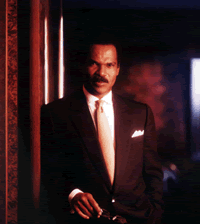 The Reginald F. Lewis Museum of Maryland African American History and Culture opened on June 25, 2005 and is named after Reginald F. Lewis (1942-1993). Born in Baltimore, Lewis was an entrepreneur and philanthropist who served as chair and chief executive officer of TLC Beatrice International, the largest U.S. company owned by an African American during his lifetime.
The Reginald F. Lewis Museum of Maryland African American History and Culture opened on June 25, 2005 and is named after Reginald F. Lewis (1942-1993). Born in Baltimore, Lewis was an entrepreneur and philanthropist who served as chair and chief executive officer of TLC Beatrice International, the largest U.S. company owned by an African American during his lifetime.
To be the premier experience and best resource for information and inspiration about the lives of African American Marylanders.
General Facts
The largest African American museum on the East Coast, the Reginald F. Lewis Museum brings
Maryland to the world through its extensive permanent collection, and the world to Maryland through its educational programs and special exhibitions. The 82,000 square-foot facility accommodates over 13,000 square feet of permanent and temporary exhibition space, a two-story theater, resource center, museum gift shop, café, classrooms, meeting rooms, an outdoor terrace, and reception areas spaces, including the upper lobby reception area, are available for special events and meetings. The museum provides dynamic educational programs for both children and adults and is especially proud of its partnership with the Maryland State Department of Education. The museum’s education department has developed curricula and provided teacher training to reach more than 850,000 students and 50,000 teachers. The museum allows for a substantial increase in the number and quality of objects collected, and encourages the study and enjoyment of collections by scholars, students, and the general public.
The museum provides an important venue to share Maryland’s African American history two
blocks east of one of the state’s most popular attractions, the Baltimore Inner Harbor.
Permanent Exhibition
The Reginald F. Lewis Museum has three permanent galleries on its third floor that highlight ordinary and extraordinary African American heroes in Maryland.
They include:
• Building Maryland, Building America explores three major types of work in which free and
enslaved people of African descent engaged: work on the water, tobacco cultivation, and iron
working. These endeavors were essential to building the colony, and later, state of Maryland.
• Things Hold, Lines Connect shows how African American families and community
organizations provided comfort and support in the face of oppression, while creating
environments in which resistance to oppression could be planned and nurtured.
• The Strength of the Mind features stories about the creative spirit of Maryland African
Americans by focusing on their accomplishments in the arts and education.
